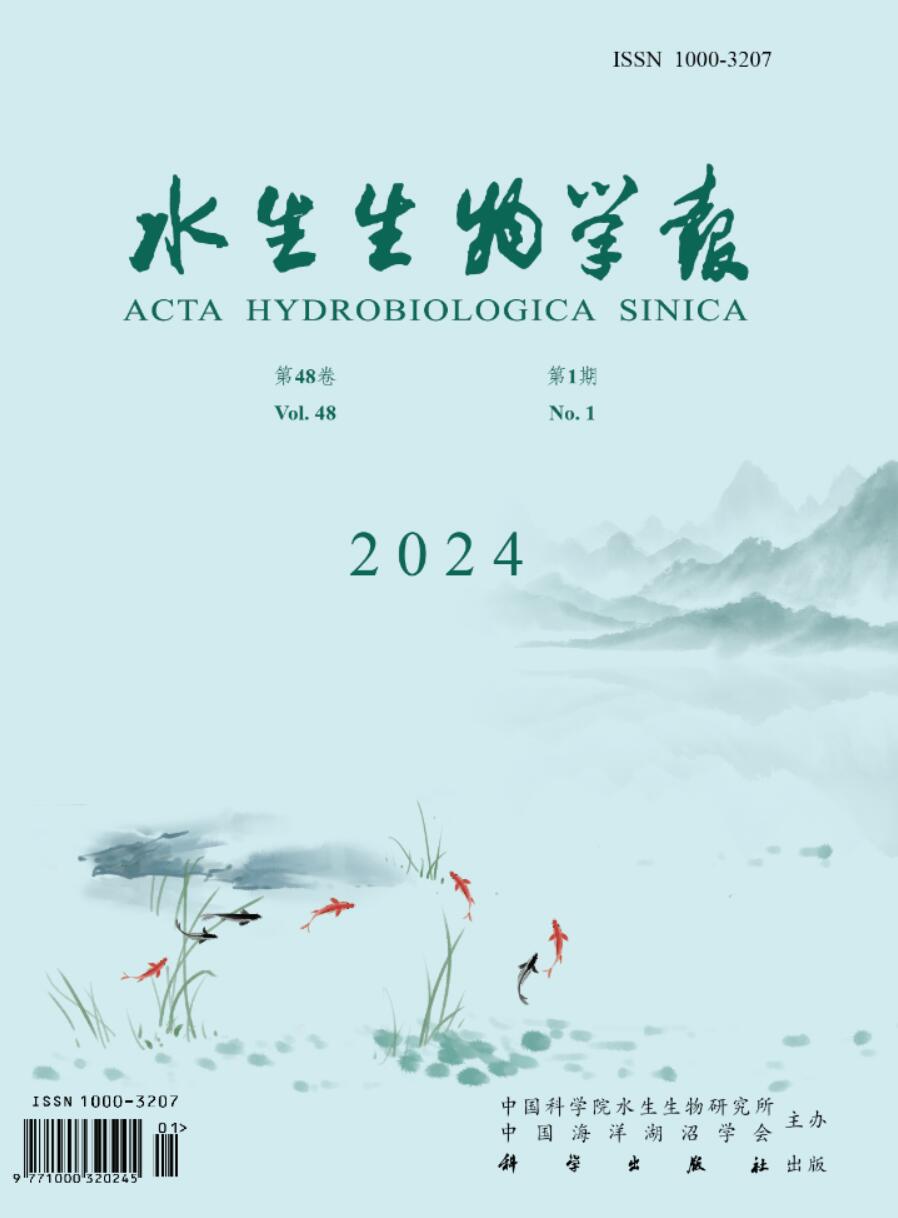EFFECTS OF ACUTE TEMPERATURE CHANGE ON RESTING OXYGEN CONSUMPTION RATE AND CRITICAL SWIMMING SPEED IN JUVENILE SOUTHERN CATFISH (SILURUS MERIDIONALIS CHEN)
引用次数: 7
Abstract
The effects of short-term acute temperature change(20℃→10℃ and 20℃→30℃) and long-term temperature acclimation(10,20 and 30℃,two weeks) on resting oxygen consumption rate(Resting oxygen consumption rate,VO2) and critical swimming speed(Critical swimming speed,Ucrit) of juvenile southern catfish(Silurus meridionalis Chen) were conducted to examine the different physiological responses of fish underwent acute and chronic temperature change.The results of present study showed that the relative critical swimming speeds(Relative critical swimming speed,Ur) of 10,20 and 30 ℃ acclimation group were 1.83,2.87 and 3.37 BL/s(Body length per second)(P0.05),respectively.The Ur of both acute temperature elevation group and acute temperature decline group was not significantly different from that of corresponding acclimation group(P0.05).The relationship between Ur and acclimation temperature showed as Ur =0.8114T+ 1.0976(n=37,R2 = 0.973,P0.05).The VO2 increased profoundly with temperature(P0.05) and those values were 14.91,28.34 and 44.98 mg O2/kg·h,respectively.Both acute high temperature exposure and acute cold temperature exposure have a significant influence on VO2 of juvenile southern catfish.The VO2 of acute temperature elevation group firstly increased and then decreased slowly to a relative stable VO2.The peak value(3.1) of Q10 of VO2 in high temperature exposure group appeared at 0.5h after acute temperature change and was about two folds that of control group while the peak value(3.1) of Q10 of VO2 in acute temperature decline group appeared at 8h after acute temperature change and was about four folds that of control group.It suggested that acute temperature change exerted a profoundly influence on the metabolic physiological process of juvenile southern catfish.The metabolic responses to acute temperature decline group differed significantly from that of acute temperature elevation group.The physiological stress elicited by acute temperature decline might be much higher than that of acute temperature elevation group.When faced the acute change of environmental temperature,juvenile southern catfish can compensate for the physical negative effect of acute temperature change on swimming performance physiologically.Fish might adjust the metabolism strategy to meet the energy demand of locomotion when necessary and hence increase the fitness of fish during an acute temperature descendent adversity.急性温度变化对南方鲶鱼幼鱼静息耗氧量和临界游动速度的影响
研究了短期急性温度变化(20℃→10℃和20℃→30℃)和长期温度驯化(10、20和30℃,2周)对南方鲶鱼幼鱼静息耗氧率(静息耗氧率,VO2)和临界游泳速度(临界游泳速度,Ucrit)的影响,探讨了急性和慢性温度变化对鱼体生理反应的影响。本研究结果表明,10、20和30℃驯化组的相对临界游泳速度(relative critical swimming speed,Ur)分别为1.83、2.87和3.37 BL/s(体长/秒)(P0.05)。急性温度升高组和急性温度下降组的Ur与相应的驯化组比较差异均不显著(P0.05)。Ur与驯化温度的关系为Ur =0.8114T+ 1.0976(n=37,R2 = 0.973,P0.05)。随着温度的升高,VO2显著升高(P0.05),分别为14.91、28.34和44.98 mg O2/kg·h。急性高温暴露和急性低温暴露对南方鲶鱼幼鱼的VO2均有显著影响。急性温度升高组VO2先升高后缓慢下降至相对稳定的VO2。高温暴露组VO2 Q10的峰值(3.1)出现在急性体温变化后0.5h,约为对照组的2倍;急性体温下降组VO2 Q10的峰值(3.1)出现在急性体温变化后8h,约为对照组的4倍。这表明,急性温度变化对南方鲶鱼幼鱼的代谢生理过程产生了深远的影响。急性体温下降组与急性体温升高组的代谢反应有显著差异。急性体温下降引起的生理应激明显高于急性体温升高组。当环境温度急剧变化时,南方鲶鱼幼鱼可以从生理上补偿温度急剧变化对游泳性能的生理负面影响。鱼类可能在必要时调整新陈代谢策略以满足运动的能量需求,从而提高鱼类在急性温度下降逆境中的适应性。
本文章由计算机程序翻译,如有差异,请以英文原文为准。
求助全文
约1分钟内获得全文
求助全文

 求助内容:
求助内容: 应助结果提醒方式:
应助结果提醒方式:


